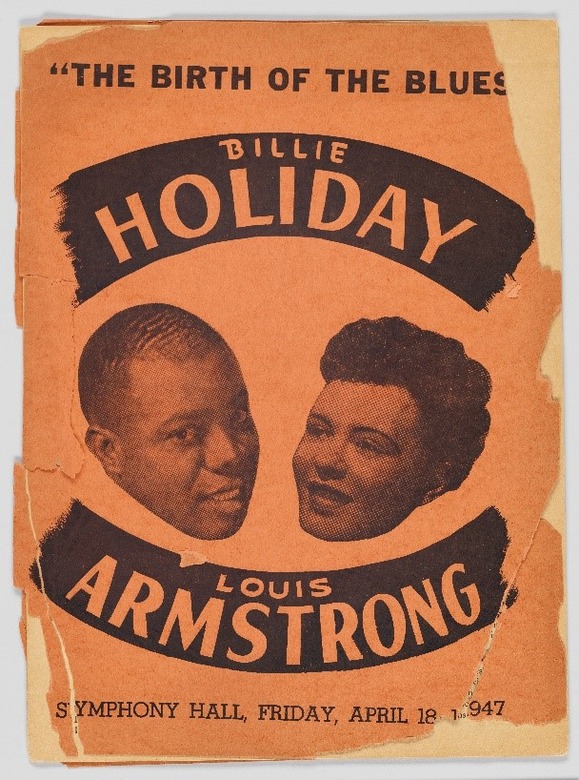Lesson 5.2: The Power of Black Art: The Empowerment of Black People Through the Arts

Overview
Big Ideas/Topics to be Addressed, including Key Concepts and Terms
Harlem Renaissance (early civil rights movement)
The New Negro
Empowerment of art- keeping hope alive
Recognition of Black culture through the Arts (film, literature, art, music, and the media)
Jazz as popular music known as the Jazz Age
Vocabulary: Harlem Renaissance, Jazz Age, Jazz, Dizzy Gillespie, Charlie Parker, Duke Ellington, Bebop, Prohibition, speakeasy
Artwork: A program for the Boston Symphony Hall that features Louis Armstrong and Billie Holiday Collection of the Smithsonian National Museum of African American History and Culture 1947
Materials/Resources/Speakers
Dizzy Gillespie’s 1960 portrait of Duke Ellington https://www.youtube.com/watch?v=wlHFp7lKMK8
Dizzy Gillespie’s Quintet https://youtu.be/2uLpjp7xkyI
Charlie Parker’s Jam session https://youtu.be/2uLpjp7xkyI
“Mother to Son” by Langston Hughes - read aloud by Viola Davis
https://www.history.com/news/harlem-renaissance-photos
A New Negro for a New Century, Booker T. Washington (Print and Audio)
Recommended Learning Activities, including UDL Principles/Scaffolded Supports and Asynchronous and Synchronous Learning Opportunities
Day 1
Initiation: Read “Mother to Son” by Langston Hughes. Reflect on Hughes’ contributions to the Harlem Renaissance. Ask how art like this has revitalized the notion of community. What is the message about hope in this piece? How does poetry contribute to our understanding of self and others? How can we use our voices to effectively invoke change in our world?
Use the QFT (Question Formulation Technique) to begin inquiry and develop strong questioning techniques. https://sites.lsa.umich.edu/inclusive-teaching/question-formulation-technique/
Activity: In small groups, students will begin developing questions on images from the time period. Students will ask themselves, How does the art I love connect or trace back in some way to the art of the Harlem Renaissance?
Explore photos https://www.history.com/news/harlem-renaissance-photos.
Explore a map of the night life during the Harlem Renaissance https://www.6sqft.com/1932-map-illustrates-a-vibrant-nightlife-during-the-harlem-renaissance/
Listen and view performances of jazz musicians such as Dizzy Gillepsie, Charlie Parker, and Marian Anderson.
Closing: As a class, discuss notices and wonderings.
Day 2
Initiation: Listen to songs that steered the Harlem Renaissance, ask questions about song title, and identify what notice and wonder about lyrics. https://www.purdue.edu/convocations/harlem-100-artists-that-steered-the-harlem-renaissance
Activity: Based on student interest, choose a video from The Harlem Renaissance’s Cultural Explosion, in Photographs https://www.youtube.com/watch?v=0ivWbxiVFTs. Then, read Arturo A. Schomburg: His Life and Legacy.
Closing/Evidence of Learning: Students can chose to write a new verse to one of the songs, write a diary entry as if they were the singer telling about the song, or draw a picture about the song.
Day 3
Initiation: Begin class and “Don’t Mean a Thing (If is Ain’t Got That Swing)”, Louis Armstrong, Duke Ellington https://binged.it/3AhemlO. Students will discuss and share impressions of this piece.
Activity: Students will analyze the artistic culture of African Americans during the Harlem Renaissance. Students can do a quick search and self-select a person to explore (examples listed below). Students should capture contributions/legacy of the individual in a creative way.
CT Bessye Proffitt
Arturo Schomburg
Pauline Elizabeth Hopkins
Billie Holiday
Duke Ellington
Closing/Evidence of Learning: Students will share contributions and use exit ticket to respond to prompt: How did the Harlem Renaissance impact society?
Home Links/Reflections to Affirm Identity
Ongoing reflections, a diary or journal, about why the art that a student chooses or gravitates toward is appealing or reflects their inner selves.
Reflect and identify a favorite painting, story, musical selection, etc., of the time. What resonated with you and why?
Options for Content Continuity Across History Courses and Interdisciplinary Integration
Music - Students can research a Jazz Musician and their contribution to “pop” music
ART/ELA The beginnings of a “collection” for a “gallery walk” or other form of presentation would be ideal to blend with ELA and Fine Arts classes
Community Fine Arts Visit - Artist Collective, The Amistad Center for Art & Culture for virtual learning session
Investigate local art community - Bessye Proffitt, Dollie McLean, Artists Collective and Lasting Legacy of Harlem Renaissance in Hartford and other cities
Extensions/Experiential Opportunities
Bringing in a speaker or artist, or even a teacher from the Fine Arts to present, discuss, etc.
Explore history of the New Negro: An appeal to the King, Bowen, J. W. E.
https://www.loc.gov/item/12002889/
Discussion: How are African Americans depicted – Old vs. New Negro? Who were influential Afro-Latinos of the time? What were their contributions?
Souls of Black Folk by Du Bois
https://www.gutenberg.org/files/408/408-h/408-h.htm
James Weldon Johnson’s Autobiography of an Ex-Colored Man